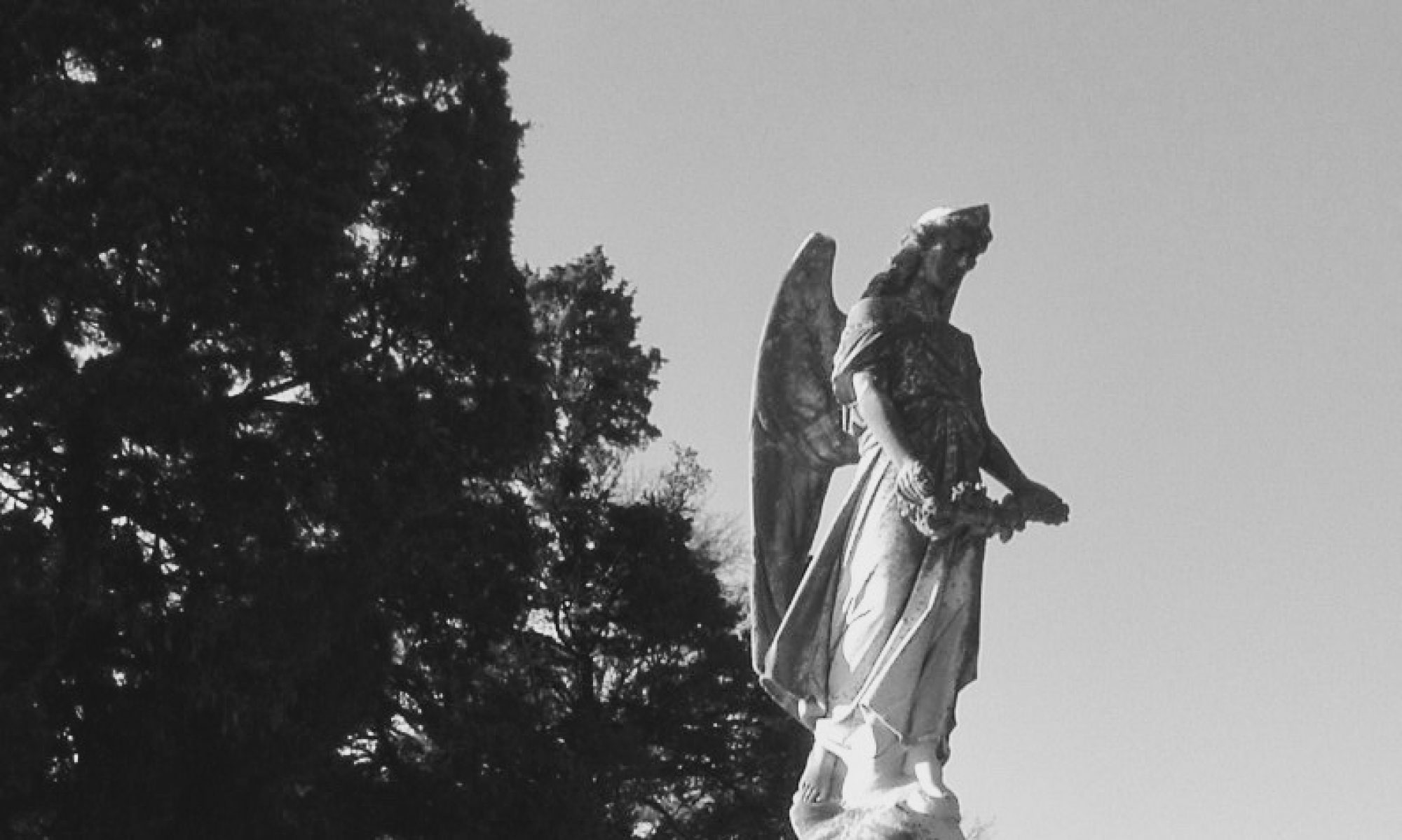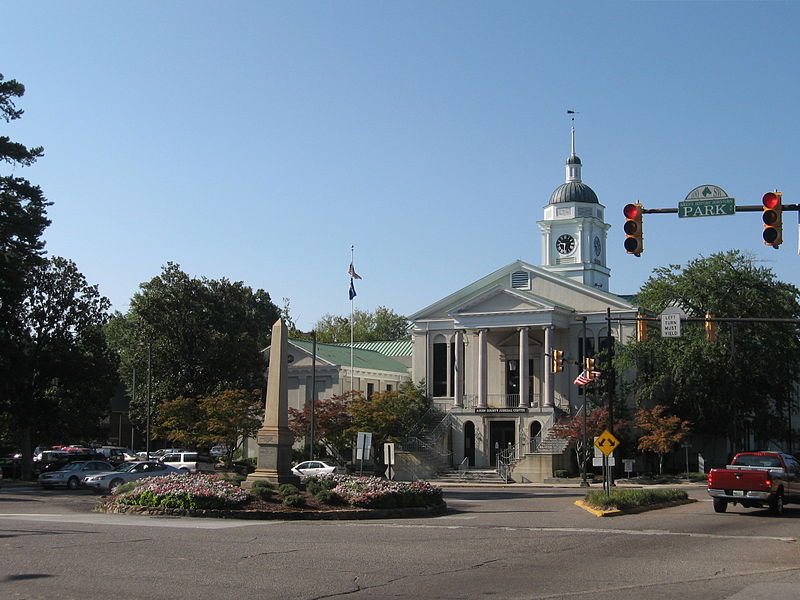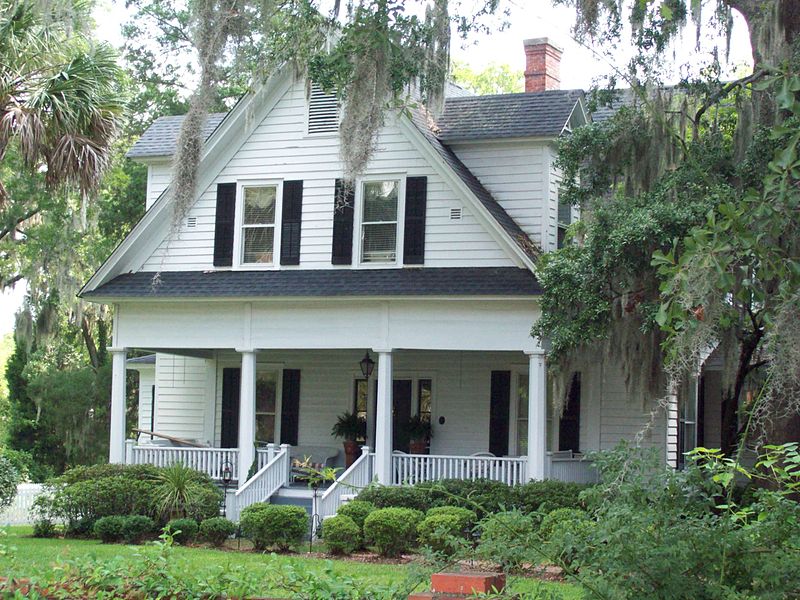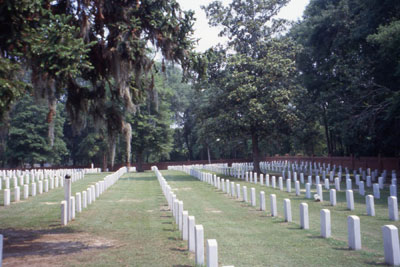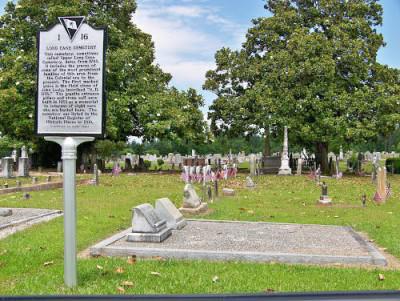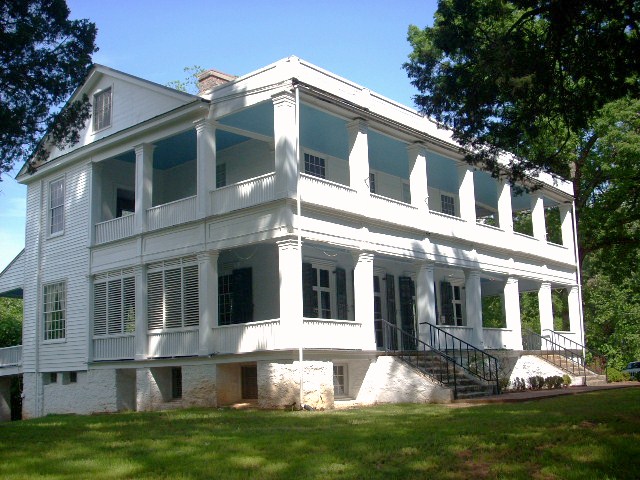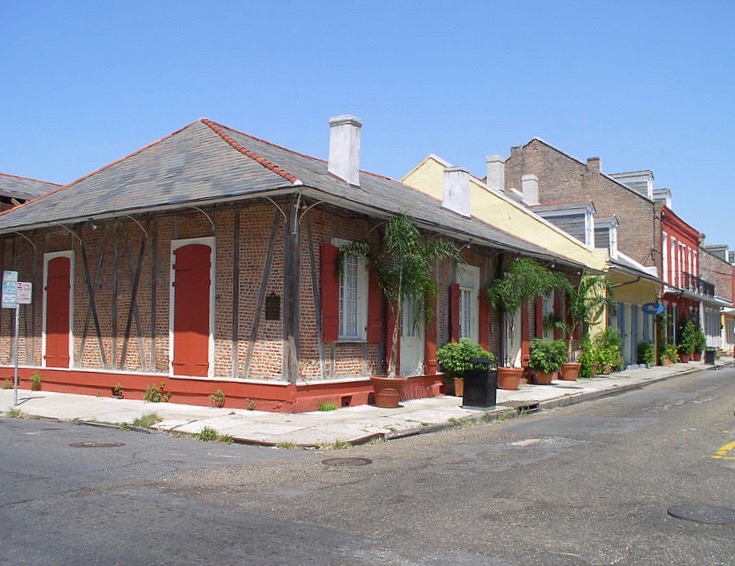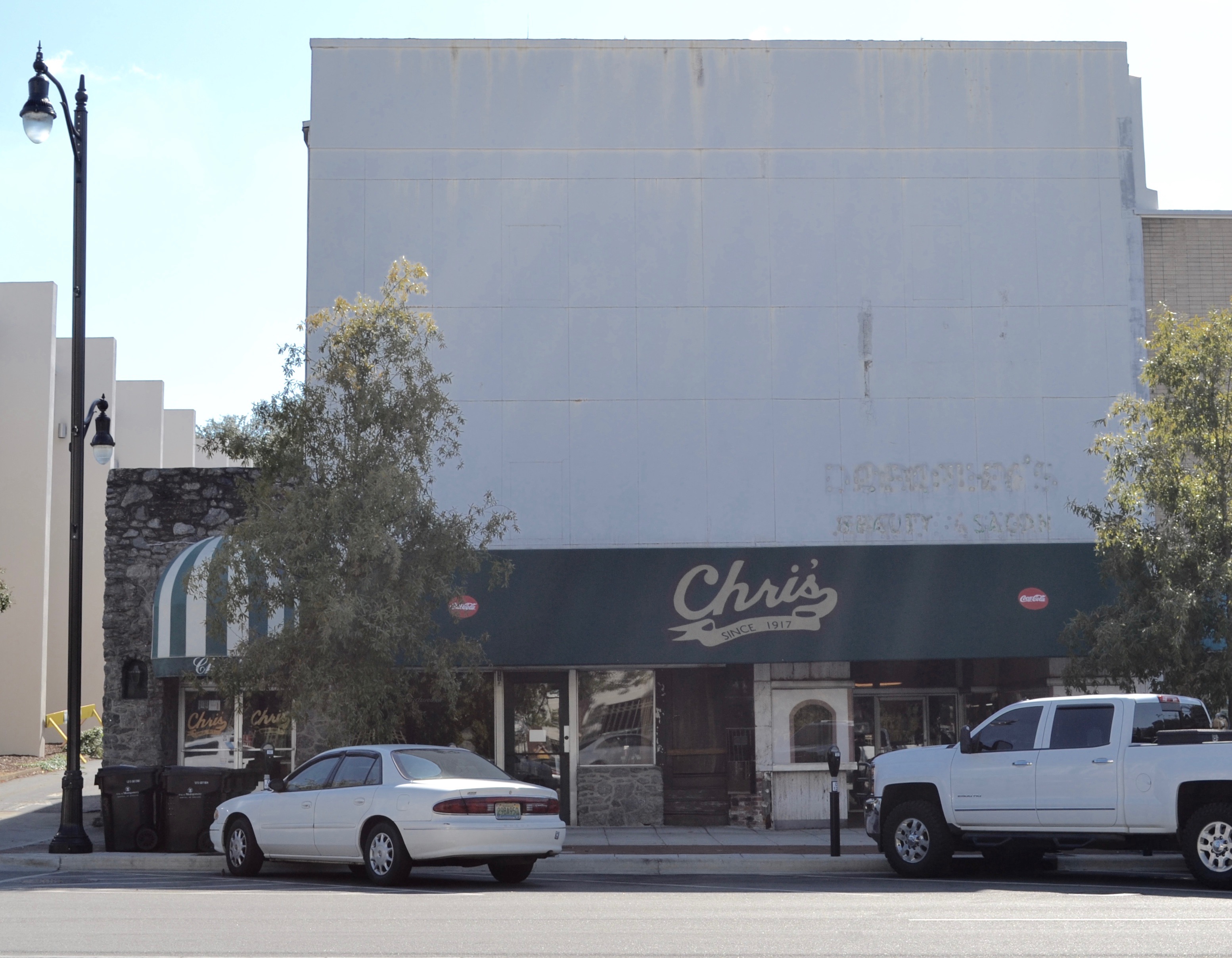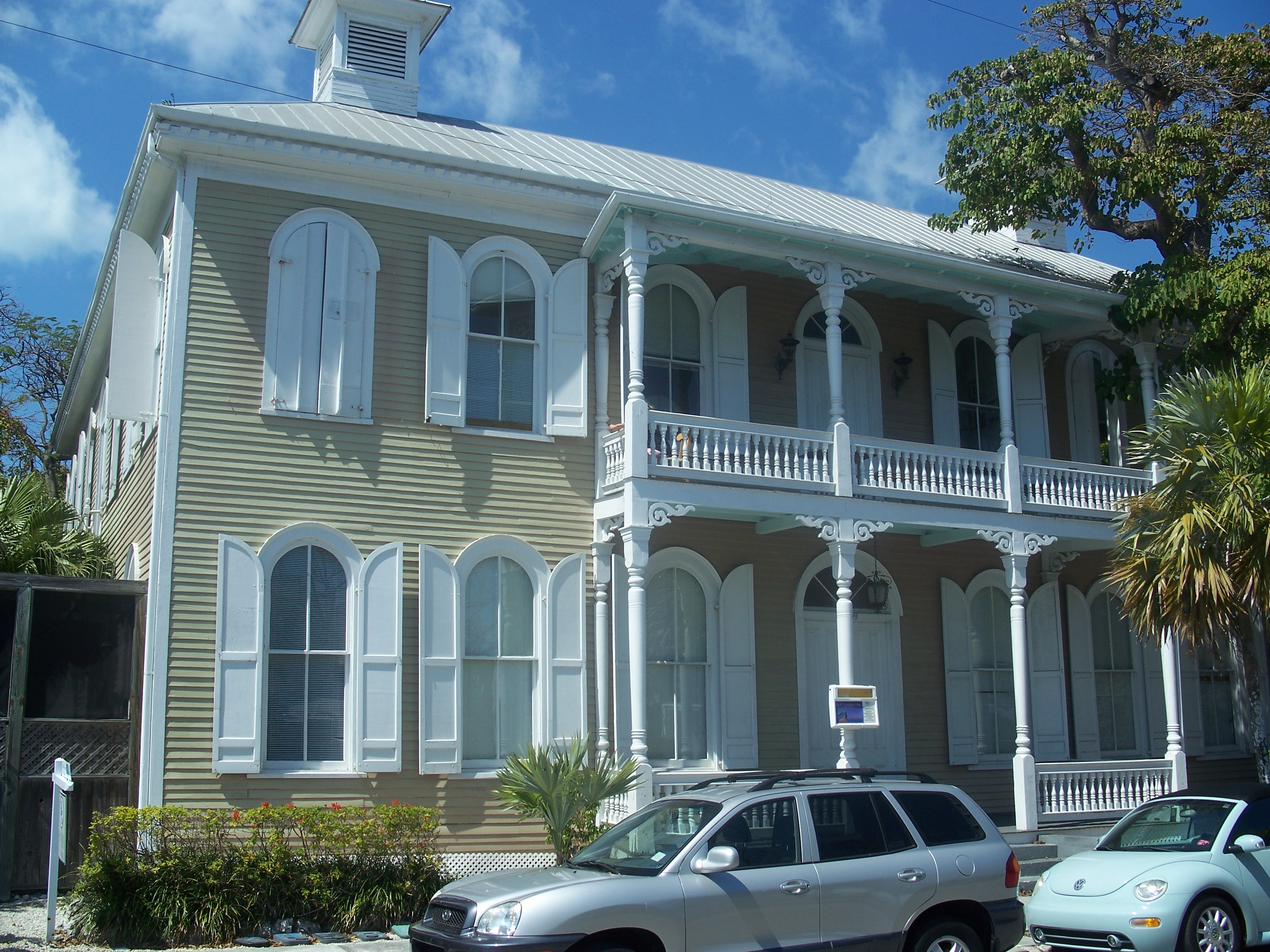N.B. This article was originally posted as part of “A Spectral Tour of the Shenandoah Valley,” which I published in 2014. Seeing that the article needed some serious work, I have decided to shift some things around and post each city as a separate article.
Winchester, Virginia’s twisting history certainly makes it fertile ground for hauntings.
Chartered in 1752, the city was one of the most important cities in the region during the 19th century. Nine major roads converged along with the Winchester and Potomac Railroad, making this a crucial market town.
With the coming of the Civil War, the city’s location made it a prize coveted by both armies. It would famously change hands many times during the war. Three major battles took place here with a host of smaller battles and skirmishes taking place throughout the region. This bloody history has most certainly left a spiritual mark on the Shenandoah and especially on Winchester.
Winchester’s ghosts have been documented primarily in Mac Rutherford’s 2007 book, Historic Haunts of Winchester: A Ghostly Trip Through the Past. There is a ghost tour, Ghost Tours Old Town Winchester, Virginia, which is hosted occasionally.
The tour is arranged alphabetically by street, with the sites in order by street address south to north and east to west.
East Boscawen Street
Mount Hebron Cemetery
305 East Boscawen Street
Encompassing four different cemeteries, Mount Hebron holds some of the oldest burials in the city. Two of the cemeteries within its precincts date to the mid-18th century, while the large Stonewall Confederate Cemetery was created just following the Civil War. This may also be the most haunted section of this cemetery. The marker for the Patton Brothers, George and Tazewell (Col. George S. Patton was the grandfather of General George S. Patton who lead American forces during World War II), has some reported activity with it involving a lone figure seen near it. Wearing a military greatcoat and peaked hat, the figure walks towards the marker and disappears. Legend holds that the figure may be none other than Nazi Field Marshal Erwin Rommel. During the 1930s, Rommel was one of a number of German military leaders who spent time in the area studying the military tactics of Confederate General Stonewall Jackson.

by Karen Nutini, courtesy of Wikipedia.
While the Confederate dead—some of whom were unknown—were buried in the cemetery here, the Union dead were buried across Woodstock Lane in the National Cemetery. Mac Rutherford notes that people living in the area and passersby just after sundown have seen gray figures rising from the Confederate section of Mount Hebron and making their way across the street towards the National Cemetery.
Sources
- History. Mount Hebron Cemetery. Accessed 21 September 2014.
- Klemm, Anna and DHR Staff. National Register of Historic Places Nomination form for Mount Hebron Cemetery. 25 July 2008.
- Rutherford, Mac. Historic Haunts of Winchester: A Ghostly Trip Through the Past. Charleston, SC: History Press, 2007.
- Toney, B. Keith. Battlefield Ghosts. Berryville, VA: Rockbridge Publishing, 1997.
West Boscawen Street
38 West Boscawen Street, private
One of Winchester’s most accomplished daughters, the singer Patsy Cline, is associated with this building. It was here, at the G&M Music Store, where Cline bought her first guitar and made some of her first recordings. Visitors to the room that once housed the recording studio have experienced a coldness and claim to have felt the spirit of the famed singer.
Sources
- Rutherford, Mac. Historic Haunts of Winchester: A Ghostly Trip Through the Past. Charleston, SC: History Press, 2007.
125 West Boscawen Street, private
This circa 1790 home is now occupied by a law firm. Like many buildings throughout the city, this structure served as a hospital for the wounded during the Civil War. Employees of the businesses that have occupied this space over the past few decades have reported hearing footsteps regularly and feeling a cold chill in certain rooms.
Sources
- Rutherford, Mac. Historic Haunts of Winchester: A Ghostly Trip Through the Past. Charleston, SC: History Press, 2007.
Fuller House Inn
220 West Boscawen Street
This magnificent home was constructed in 1854 incorporating the late 18th century servants’ quarters from the Ambler Hill Estate. On the eve of the Civil War, the house was purchased by prominent local dentist, Dr. William McPherson Fuller. This building was also commandeered for use as a hospital during the Civil War and that may explain the presence of a soldier who has been seen in the house. The house serves as an intimate event space and lodging.
Sources
- Varhola, Michael J. Ghosthunting Virginia. Cincinnati, OH: Clerisy Press, 2008.
South Braddock Street
South Braddock Street
Between Cork and Boscawen Streets
Soldiers from the Civil War have been seen along this street. After the First Battle of Winchester on May 25, 1862, which was a Confederate victory, Union forces retreated along this street. According to Mac Rutherford, they held their formations along this street until they reached the center of town where they broke rank and ran for their lives. The reports of soldiers seen here usually include large formations of many soldiers.
Sources
- Rutherford, Mac. Historic Haunts of Winchester: A Ghostly Trip Through the Past. Charleston, SC: History Press, 2007.
Braddock Street United Methodist Church Parking Lot
Intersection of South Braddock and Wolfe Streets, Southeast Corner
This block has spiritual activity from two different wars. The Braddock Street United Methodist Church Parking Lot has possible activity dating to the French and Indian War (1755-1762). During that war, Fort George, one of two forts built in the area under the purview of Colonel George Washington, stood near here. This piece of property was used for drilling recruits and Colonial soldiers have been seen in the area and in the building that once occupied this site.
Sources
- Rutherford, Mac. Historic Haunts of Winchester: A Ghostly Trip Through the Past. Charleston, SC: History Press, 2007.
North Braddock Street
Kimberly’s (Lloyd Logan House)
135 North Braddock Street
Lloyd Logan, a local tobacco merchant, built this home around 1850 and it was considered one of the finest homes in town. When war came, the house was taken over by Union generals Franz Sigel and later by Philip Sheridan. Under orders from General Sigel, Lloyd Logan was thrown in jail and the house and most of its contents were confiscated for army use. Logan’s wife and daughters were later removed from the house and unceremoniously dumped along the Valley Pike. This incident may contribute to the spiritual activity within the home.
From Braddock Street, look up at the two windows on the south side of the second floor. Passersby have seen the figure of a man pacing and throwing his hands into the air. One witness described him as not “really clear, sort of gray and fuzzy. I think he was even pulling at his hair.” Employees of Kimberly’s have also seen the man in that room and state that he is accompanied by a woman crying in the corner.
Sources
- Rutherford, Mac. Historic Haunts of Winchester: A Ghostly Trip Through the Past. Charleston, SC: History Press, 2007.
West Cork Street
Cork Street Tavern
8 West Cork Street
Occupying a pair of early 19th century residences, the Cork Street Tavern has a pair of ghosts, though there seems to be some uncertainty as to why they’re there. Much of the structure’s history is well-known except for the period during Prohibition when the building may have been used as a speakeasy and brothel. The pair, nicknamed John and Emily by the restaurant staff, have both made their presence known with a variety of activity. Apparitions of both have been seen in the building while Emily’s voice has been heard calling, “John,” a number of times. A spirit has also been known to trip female patrons walking into the non-smoking section. The level of activity here is high enough that it led an investigator to remark during a 2009 investigation that “nothing holds a candle to Cork Street.”
Sources
- History. Cork Street Tavern. Accessed 17 September 2014.
- Rutherford, Mac. Historic Haunts of Winchester: A Ghostly Trip Through the Past. Charleston, SC: History Press, 2007.
- Varhola, Michael J. Ghosthunting Virginia. Cincinnati, OH: Clerisy Press, 2008.
- Williams, J.R. “Paranormal investigators examine Cork Street Tavern for ghost activity.” The Northern Virginia Daily. 3 August 2009.
South Loudoun Street
Water Street Kitchen
(formerly Old Town Café)
2 South Loudoun Street
This large, brick building was originally the family home of the prominent Holliday family and this was the home of Frederick Holliday who served as governor during the 19th century. The building has seen a variety of uses including post office, a dry goods store and drug store. Since its use as a restaurant, the owners have discovered that the building is also the residence of two ghosts. A male spirit has been seen ascending the stairs from the basement, though he always just stops and stares upon reaching the top. A woman’s spirit has been seen entering the building’s front door and rearranging items on the shelves inside the restaurant.
Sources
- Rutherford, Mac. Historic Haunts of Winchester: A Ghostly Trip Through the Past. Charleston, SC: History Press, 2007.
Red Lion Tavern Building
204-208 South Loudoun Street
This historic tavern building was constructed in 1784 by a German-born Revolutionary War veteran named Peter Lauck. He is known to have had seven daughters, one of whom may still be seen and heard in the building. People recently working in the building have been thanked by a soft, feminine voice saying, “danke.” The shadowy figure of a woman in colonial dress is sometimes seen when the voice is heard.
Sources
- Rutherford, Mac. Historic Haunts of Winchester: A Ghostly Trip Through the Past. Charleston, SC: History Press, 2007.
North Loudoun Street
Old Court House Civil War Museum
20 North Loudoun Street
Of all the buildings throughout Winchester that were impacted by the Civil War, the biggest impact was possibly on this building which was constructed in 1840 as the Frederick County Court House. The building served as a hospital and, after the Third Battle of Winchester, a prison for captured Confederates. Many of the scars left on this building including the graffiti left on the walls by soldiers from both sides have been preserved. The building has also been the scene of some rather intense spiritual activity.

Some spiritually sensitive passersby have witnessed gray forms huddled in the building’s courtyard where Confederate prisoners were kept. In the old courtroom, voices have been heard ranging from faint whispers to obnoxious shouting and the cries of the wounded that once crowded this space. During the building’s renovation, workers had tools and equipment moved. Three workers walked off the job when scaffolding was moved from one side of the room to another during a lunch break.
Sources
- Austin, Natalie. “Local ghost expert shares stories of the supernatural.” The Northern Virginia Daily. 30 October 2004.
- Rutherford, Mac. Historic Haunts of Winchester: A Ghostly Trip Through the Past. Charleston, SC: History Press, 2007.
33 North Loudon Street
Near this address be on the lookout for a young woman in Civil War era clothing hurrying along the street with a shawl wrapped around her shoulders. This is believed to be the spirit of Tillie Russell, a local woman who legend calls, “The Angel of the Battlefield.”
A small engagement occurred at Rutherford’s Farm outside of Winchester on July 20, 1864. Union forces attacked a Confederate division on General Stephen Ramseur throwing that division into confusion. Capt. Randolph Ridgeley of the 2nd Virginia Volunteer Infantry was seriously wounded when Tillie Russell found him and nursed him through the night. Ridgeley was found the next morning being cradled by Miss Russell and survived his wounds.
For years, people have seen the spirit of Miss Russell leaving the building at 33 North Loudoun pulling her shawl about her shoulders as she heads off towards the battlefield at Rutherford’s Farm.
Sources
- Rutherford, Mac. Historic Haunts of Winchester: A Ghostly Trip Through the Past. Charleston, SC: History Press, 2007.
Village Square Restaurant and V2 Piano Bar and Lounge
103 North Loudoun Street
These two establishments occupy a series of haunted structures all built in the early 19th century. Spirits flit and float throughout the restaurant, but the V2 Piano Bar and Lounge has the real story to tell. This building formerly housed Miller’s Apothecary which opened on this site in the mid-18th century. The apothecary was operated by the Miller family until 1992 when they decided to shutter the business. Subsequent owners of the building have all had run-ins with the resident spirits including Jeanette, a young woman who lived with the Miller family in the 18th century.
Perhaps one of the saddest stories of this location comes from the Civil War. Union soldiers from the 29th Pennsylvania Infantry were quartered in the upstairs rooms. A young African-American male was lynched by the group in a tree just outside the building. The pacing of boots and the shouts of arguing soldiers are still heard here.
Sources
- Varhola, Michael J. Ghosthunting Virginia. Cincinnati, OH: Clerisy Press, 2008.
Taylor Pavilion
125 North Loudoun Street
In its heyday, the Taylor Hotel offered the grandest accommodations in the city. Opening about a decade before the Civil War, the hotel provided accommodations to many of the generals leading troops through the area during the war. Sadly, one of the red-headed call girls who served at the hotel still lingers in this building.
In 2011, the old hotel was purchased by the city and renovated to hold five apartments and restaurant space as well as an outdoor events venue. Apparently, something doesn’t like the restaurant space, though. Kitchen staff have reported that grease burners, often turned off at night, will be found to be on in the morning. One cook installed surveillance cameras to put an end to this. However, he saw that the burners were turned off by the night staff, though they were found on again that morning.
Sources
- Brehm, Brian. “Spirits frequent several Winchester haunts.” Winchester Star. 24 October 2017.
- Rutherford, Mac. Historic Haunts of Winchester: A Ghostly Trip Through the Past. Charleston, SC: History Press, 2007.
151 North Loudon Street
(formerly Olde Town Armory and Heirlooms)
Originally constructed as the Arlington Hotel, this building houses a ghost that is known to make a bathroom run every morning. Past operators of a shop here reported that the front door would frequently open by itself followed by the sound of footsteps racing into the store and up the stairs. The water in the bathroom would be turned on in the upstairs bathroom. After some time, the spirit began leaving a penny outside the bathroom door. In one case, the spirit left a penny on the floor and placed a penny on the breasts of a female mannequin being stored just outside the bathroom.
Sources
- Rutherford, Mac. Historic Haunts of Winchester: A Ghostly Trip Through the Past. Charleston, SC: History Press, 2007.
Brewbaker’s Restaurant
168 North Loudoun Street
With a core dating the late 18th century, this old commercial building has been home to a continuous line of restaurants since 1910. However, the history does not explain the apparition of a young woman who appears near the fireplace. A photograph taken here some years ago seemed to show the shadowy figure of a man wearing boots; a figure some have interpreted as a Confederate soldier.
Sources
- Brehm, Brian. “Spirits frequent several Winchester haunts.” Winchester Star. 24 October 2017.
- History of Our Building. Brewbaker’s Restaurant. Accessed 24 September 2014.
- Rutherford, Mac. Historic Haunts of Winchester: A Ghostly Trip Through the Past. Charleston, SC: History Press, 2007.
West Piccadilly Street
Phillip Williams House
(formerly Joe’s Steakhouse)
25 West Piccadilly Street
A Confederate officer is frequently seen staring out the windows of this circa 1845 mansion. Legend holds that this is the spirit of Colonel George S. Patton (the same one buried in Mount Hebron Cemetery above) who died here September 19, 1864 from injuries sustained during the Third Battle of Winchester. He is believed to have passed away on the second floor.
Sources
- Austin, Natalie. “Local ghost expert shares stories of the supernatural.” The Northern Virginia Daily. 30 October 2004.
- Rutherford, Mac. Historic Haunts of Winchester: A Ghostly Trip Through the Past. Charleston, SC: History Press, 2007.
Handley Regional Library
100 West Piccadilly Street
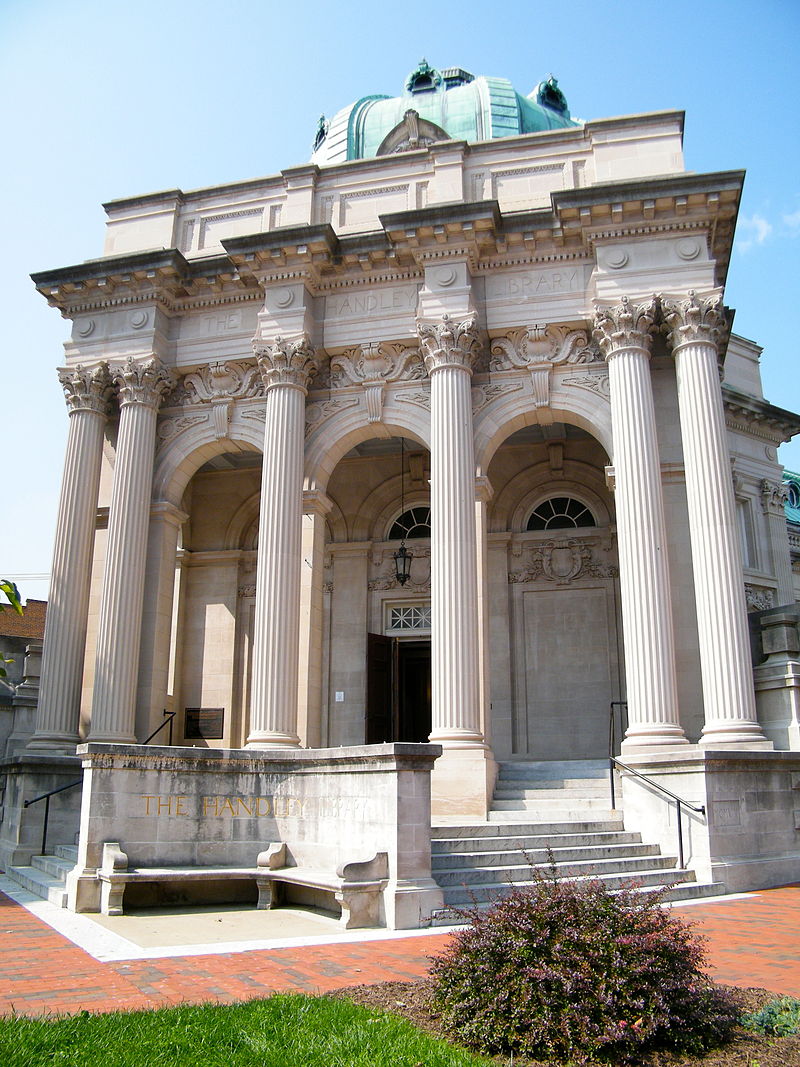
Photo 2011, by Missvain, courtesy of Wikipedia.
Opened in 1913, this glorious Beaux-Arts library was constructed as a gift to the city of Winchester from coal baron, Judge John Handley. The face of a man with a “drooping mustache” has been seen peering from the windows of the building’s rotunda. A full apparition of a man with a mustache and wearing a frock coat has been seen by library staff inside the building. Perhaps Judge Handley is checking up on his gift?
Sources
- Rutherford, Mac. Historic Haunts of Winchester: A Ghostly Trip Through the Past. Charleston, SC: History Press, 2007.
Indian Alley
Figures of very tall Indians have been witnessed along this street. There are a number of legends dating to the 18th century regarding very tall Native Americans who once lived in the area. Perhaps the spirits of these original inhabitants return? The Indians are generally seen during the first and last light of the day.
Sources
- Austin, Natalie. “Local ghost expert shares stories of the supernatural.” The Northern Virginia Daily. 30 October 2004.
- Rutherford, Mac. Historic Haunts of Winchester: A Ghostly Trip Through the Past. Charleston, SC: History Press, 2007.
Located southeast of downtown is this site:
Abram’s Delight
1340 South Pleasant Valley Road
One of the best places to understand the early history of Winchester is in the restored home of the Hollingsworth family, one of the first white families to settle in the area. Built by Abraham Hollingsworth in the mid-18th century, the house remained in the family until the City of Winchester purchased it in 1943. The house is apparently haunted by spirits of family members who once lived there. The family’s mill, which is now home to offices for the Winchester-Frederick County Historical Society, is also the scene of some paranormal activity. Please see my blog entry (An independent spirit—Winchester, Virginia) for further information.
